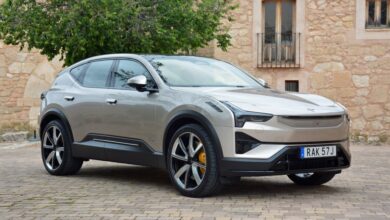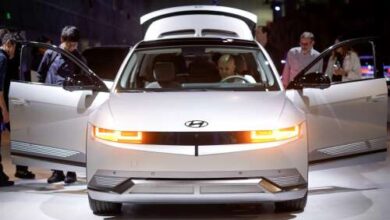Electric vehicle challenges for insurers

Despite some recent sales struggles, electric vehicles (EVs) are transforming both our roads and the insurance industry at large.
In 2023, drivers purchased
The providers who can understand and adapt to this challenge now, while EV adoption is still in its early stages, will have a major leg up as the technology spreads.
Why are EVs so expensive to insure?
Even with EV prices falling significantly over the past few years, they still come with higher upfront costs than gas cars. This, in turn, contributes to higher insurance costs.
As of March, the average transaction cost for a new electric vehicle was
Expensive cars aren’t always more
There’s data showing that crash repairs for electric vehicles tend to be more expensive, both due to the increased cost to fix certain makes —
It’s also worth noting that most EVs tend to be newer, since the technology is still young and many car companies have just recently begun selling electric models. Newer cars are typically considered more valuable and therefore more expensive to insure. New cars are also a more attractive target for car thieves, adding another potential risk.
The overall newness of EVs also means there’s simply less use and loss data for insurers to work with. Despite recent sales booms, there are still only a few million electric cars on the road in the U.S. — as of last year, the estimate was
Without a strong set of data to predict what major risks EVs face — and how those risks translate to costs — it’s much harder to land at a competitive insurance rate.
On the flip side, the data surrounding gas-powered cars is robust and has a deep history, so it’s much easier for providers to ensure that they’re offering the right price.
How can providers navigate these challenges?
The first step in dealing with the EV cost problem is understanding it. But it’s not enough for one or two people in leadership to know the factors at play — the real key is creating an educated workforce that can manage the changing tides.
All employees who deal with rates, claims and customer service should be knowledgeable on EVs, but it’s especially important for claims adjusters. With full visibility into the unique challenges EVs bring to the table, they can more accurately determine liability and the ultimate final costs for both customers and providers.
It’s also important for providers to use the information that’s available to them. Although EVs don’t come with the same plethora of use and loss data that gas-powered cars do, that disparity will decrease over time as more drivers switch to electric cars. In the meantime, providers can use all the data that currently exists and act with the knowledge that better information is coming soon.
Last but not least, all providers can stand to benefit from improving their direct repair networks, particularly with an eye toward EV maintenance and servicing. Expanding those networks can offer more options for drivers — and more competitive pricing — that could ultimately result in lower insurance costs.
See more here:

![‘[It will] boost our production capacity’ ‘[It will] boost our production capacity’](https://europeantech.news/wp-content/uploads/2024/06/1718395761_Antidotoimage-390x220.jpg)

